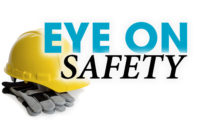Eye on Safety
Being proactive vs. reactive for safety
Six questions to ask to stay on top of safety protocol.

Image source: kupicoo / E+ via Getty Images
According to the Bureau of Labor Statistics, employee injury and illnesses were up an astonishing 7.5%, totaling 2.8 million non-fatal occurrences in 2022 (bls.gov). Workplace safety has been an upward trending topic of conversation for employers over the past decade. Several questions surround this topic, the most important questions being asked are: how do we effectively impact safety awareness to keep our employees from being injured? How, as an employer, do we reduce the drastic increases in workplace incidents as shown over the past year? The answer may be found in understanding how to focus on becoming more proactive on safety versus reactive.
To better understand how to guide your company in becoming more proactive versus reactive, one must first understand the difference between the two concepts. The execution of being proactive on safety must include an entire organization who truly exemplifies safety every minute of each day. The opposite of this is true in a reactive safety culture, one in which only responds to incidents as they occur. A proactive safety culture has every member of staff, including at the Executive level, engaged with driving extraordinary safety results. While a reactive culture may have a Safety Team, a proactive culture has every employee empowered to stand up for safety. A proactive culture does not happen overnight, but through diligent focus from all stakeholders within the organization – Executive leaders, high injury risk departments, and support from departments that are overlooked as being low risk.
Additionally, it is critical to understand a company’s safety structure by reviewing the National Institute for Occupational Safety and Health (NIOSH) Hierarchy of Controls – Personal Protective Equipment (PPE), Administrative Controls (policy and procedures), Engineering Controls (implementing barriers to the hazards), Substitution (replacing the hazards), and Elimination (removing hazards all together). Leaders should start to evaluate these control categories within the organization by asking these basic questions:
- Is the Personal Protective Equipment (PPE) throughout the organization present and in good, working condition?
- Do all employees have the tools and PPE necessary to safely conduct their job responsibilities? Is employee feedback requested to evaluate better tools to complete tasks?
- Are training, policies, and procedures in place to outline all safety measures?
- Do the training, policies, and procedures set clear expectations for all employees to understand? Are these easily accessible?
- What does the training execution look like? Is there leadership follow-up to ensure employees are taking and retaining safety related trainings?
- How does the organization analyze tasks to understand and prevent potential safety incidents? Is employee feedback requested on this regularly?
Once these questions are answered and a safety foundation is intact, then true engagement around safety can begin. High engagement from all employees is the objective when building a proactive safety environment. Again, this begins with the basics notated above, but is amplified by how leaders invest in employee wellbeing, and how effective leaders are at reflecting on, and addressing, concerns rather than pointing to blame. Communication is key on this:
- Are the leaders of an organization communicating safety at a personable level or with a generic “check the box” mentality?
- When an incident occurs, does the leader seek root cause at the employee level (the employee did not execute…) or enterprise level (we did not set the employee up for success)?
- Are employees communicating safety needs proactively, and if not then why?
A proactive safety culture needs to start from the top and be reviewed daily to emphasize importance. Daily safety walks should be conducted between leaders and employees to build trust and awareness between the two groups. Safety performance and engagement should be closely monitored through reporting and positive results rewarded regularly. Lastly, while a company may encompass all these attributes to a proactive safety culture, the number one rule in being successful on safety is to never stop improving.
Looking for a reprint of this article?
From high-res PDFs to custom plaques, order your copy today!






